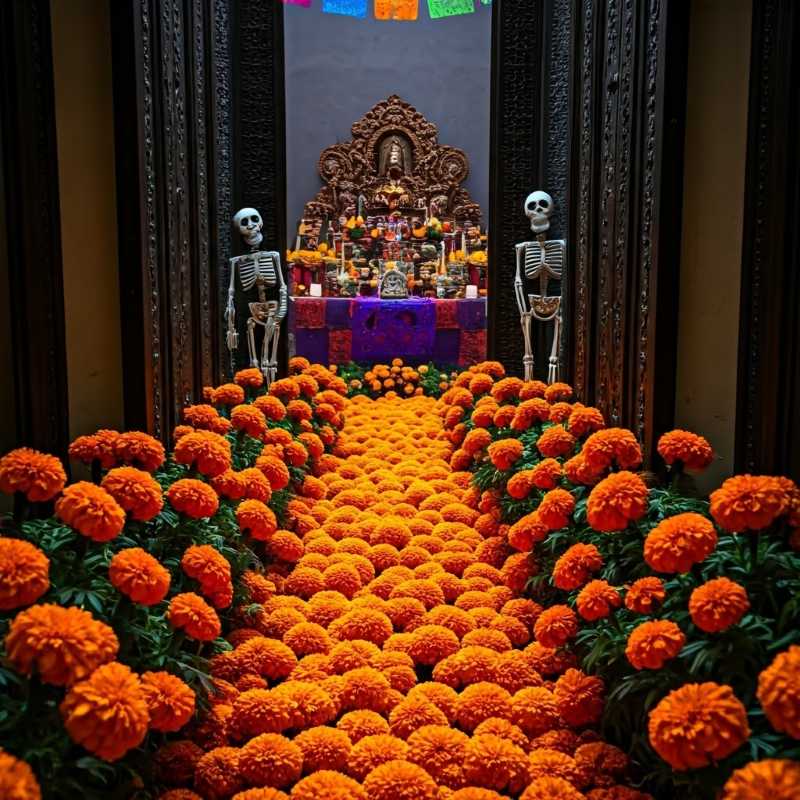How Mexico Turned Death into a Blooming Spectacle
Cempasúchil: Mexico's vibrant flower of the dead. Used in Day of the Dead celebrations, this marigold guides spirits, decorates altars, and boasts a rich cultural history. From pre-Hispanic rituals to UNESCO recognition, it's a colorful symbol of life, death, and Mexican identity.

So, imagine for a moment that it’s November, but not the dreary November of Europe, where the only excitement is watching leaves rot. No, it’s November in Mexico, and as the sun dips below the horizon, a vast, vibrant spectacle comes to life. A fiesta so alive with colors and scents that it’d make a British garden party look like a business meeting in a cardboard box. Welcome, my friends, to Mexico’s “Day of the Dead” – an event that revels in life while unapologetically honoring death.
Now, before you clutch your pearls, let me tell you that “Day of the Dead” isn’t some dark, gory horror film brought to life. Quite the opposite. It’s as if a cathedral married a carnival, and out came this brilliant festival that’s charming, solemn, and gloriously over-the-top in equal measure. And at the heart of this spectacle lies a flower – a blossom so quintessentially Mexican that, quite frankly, it’s difficult to imagine the tradition without it. I’m talking about the cempasúchil, also known as the flower of the dead. Yes, a flower with such a rich backstory that it could fill a whole bloody novel.




